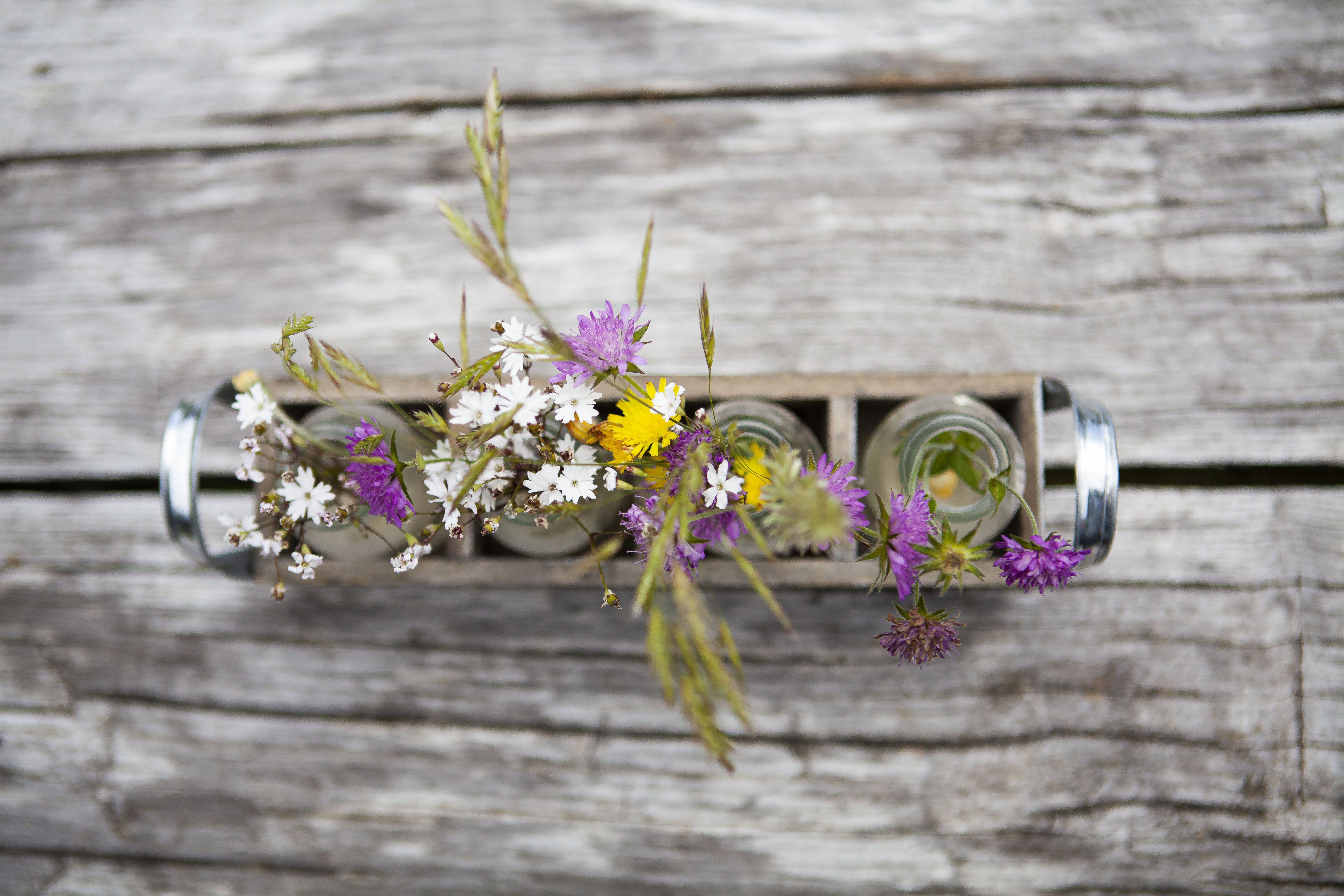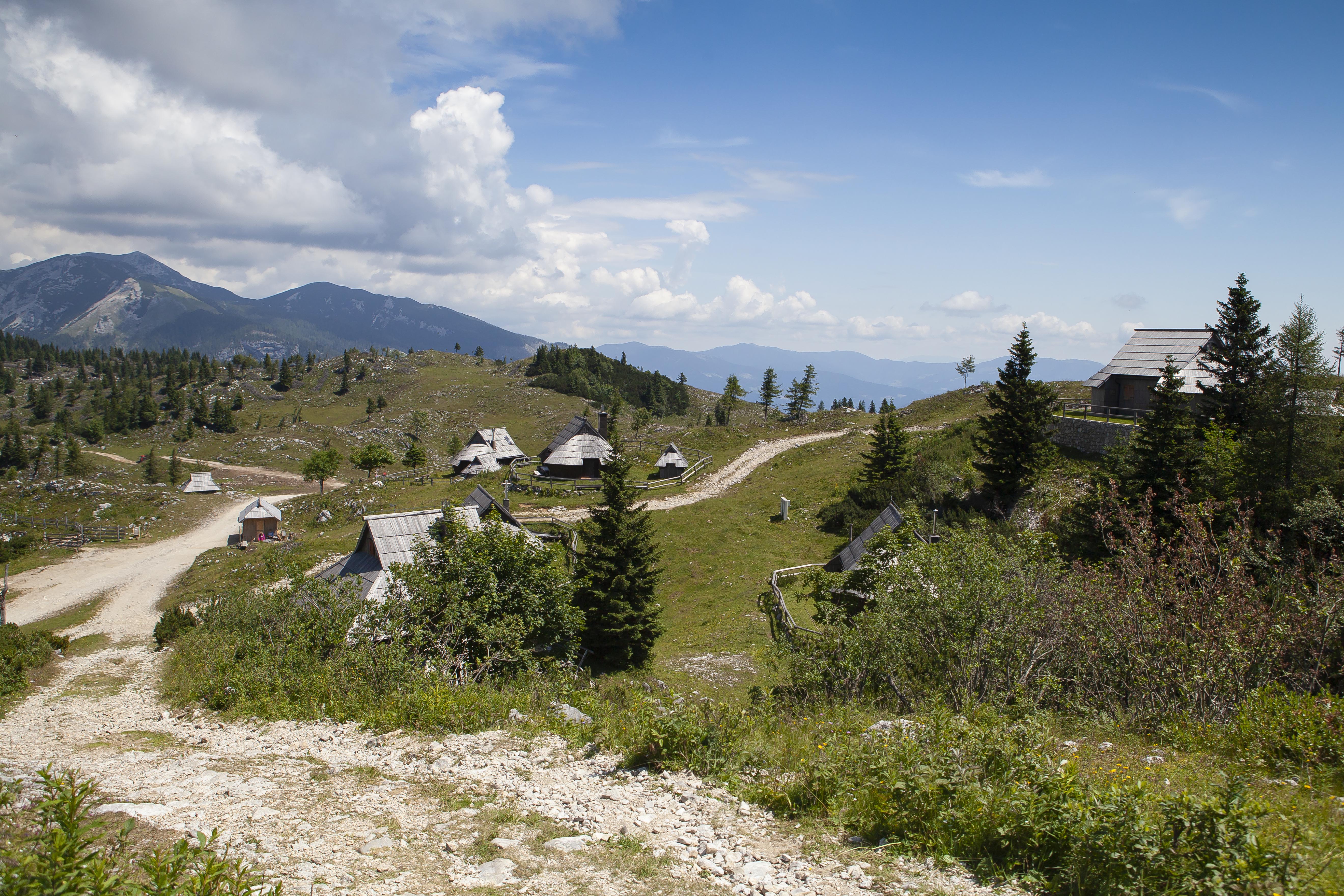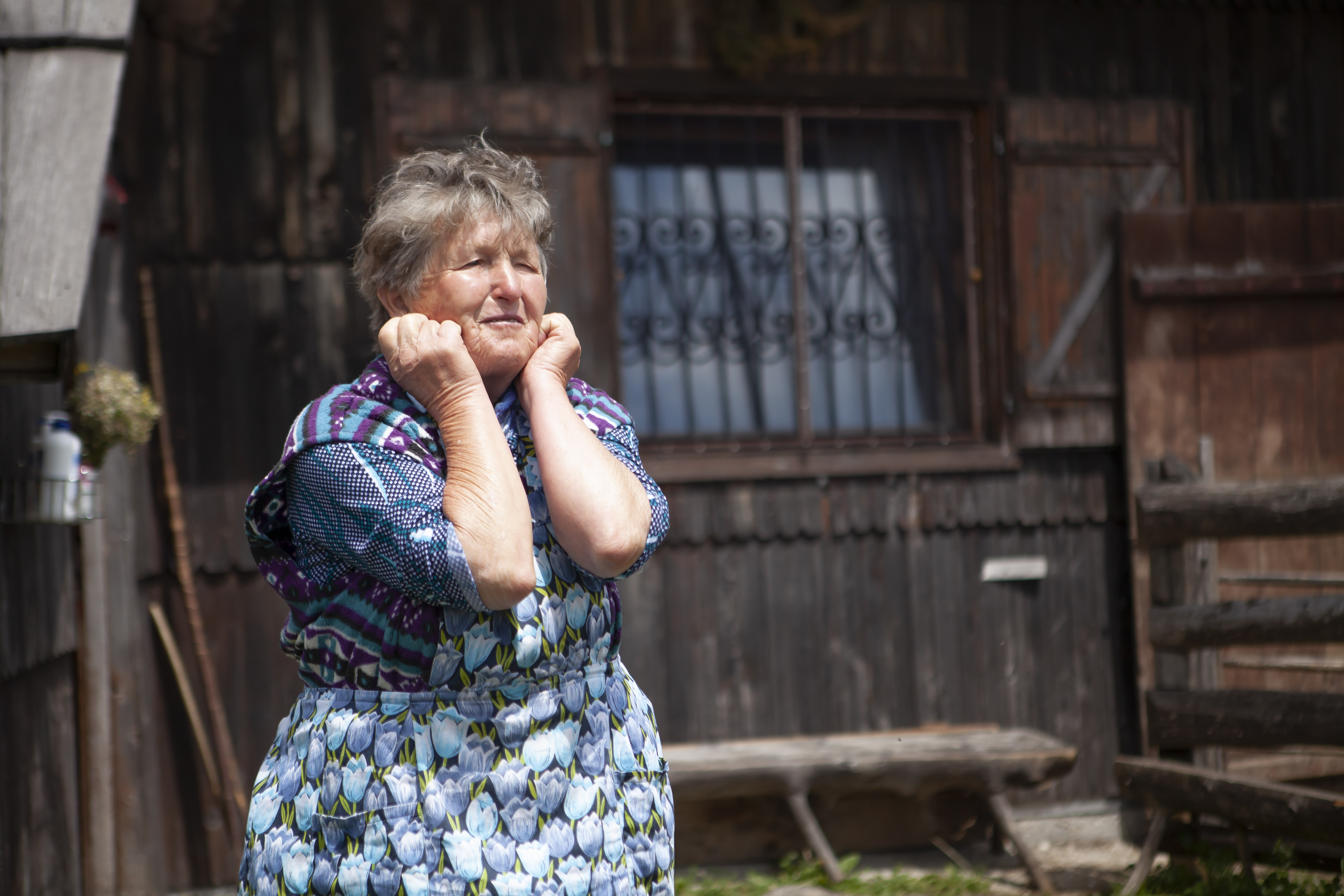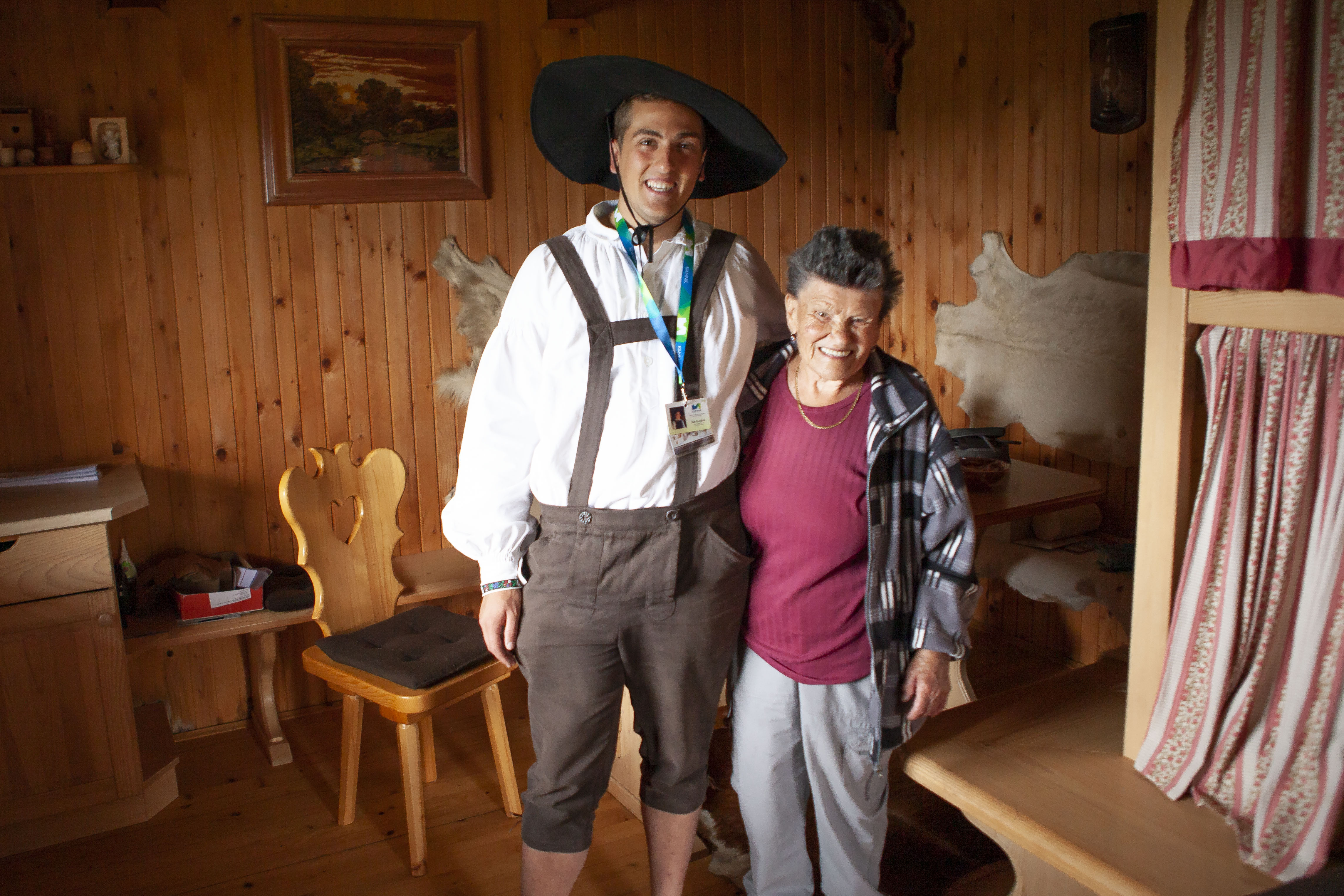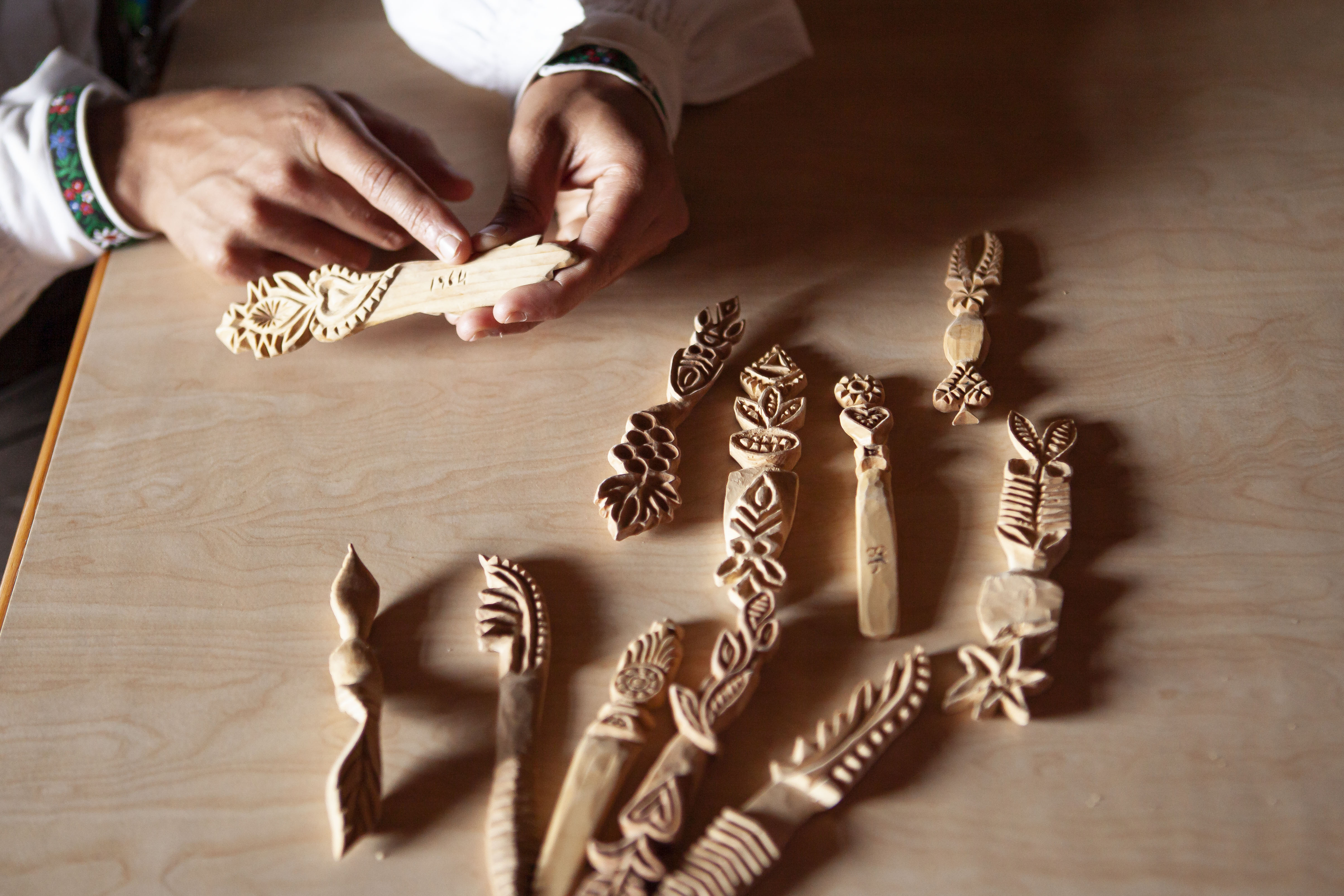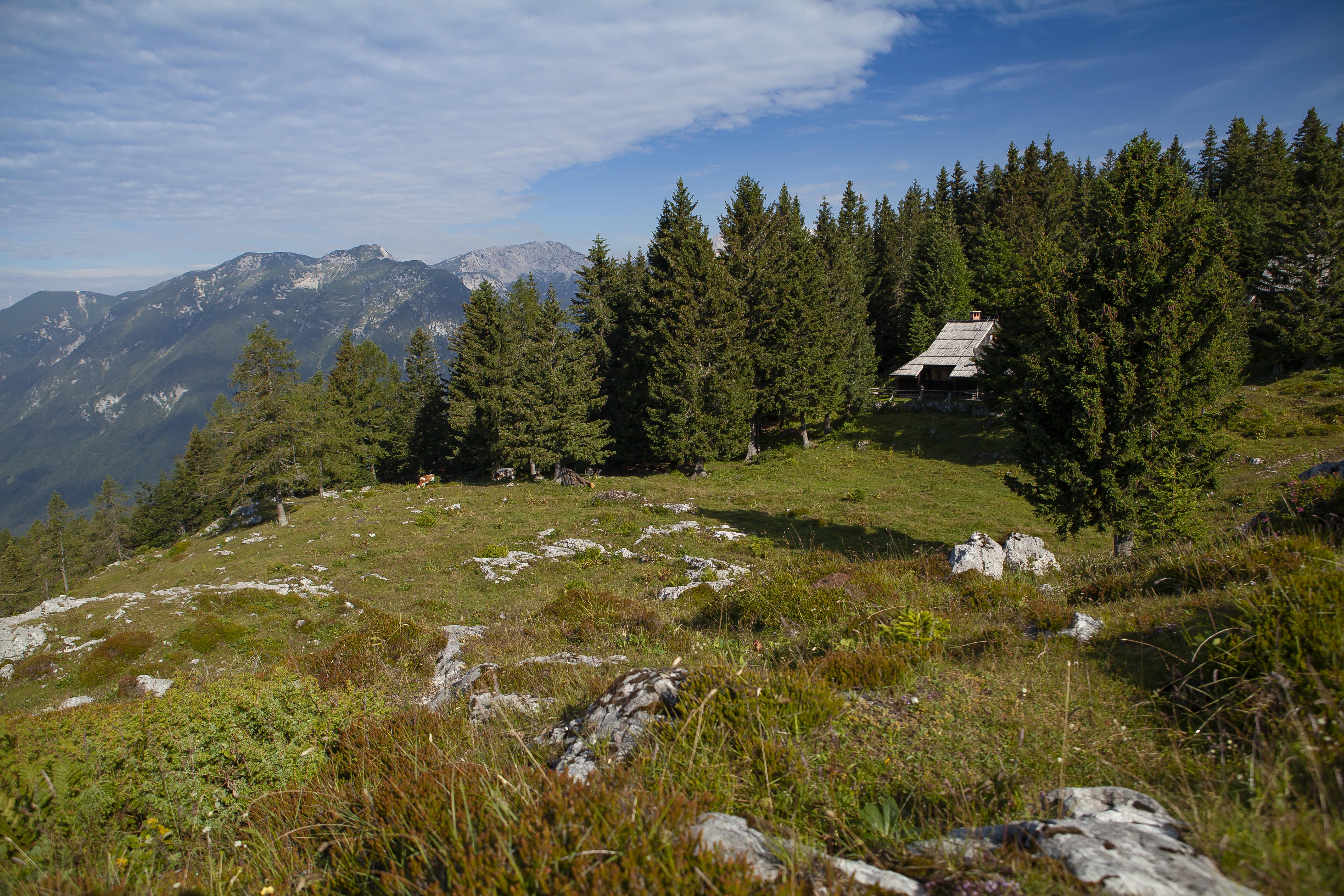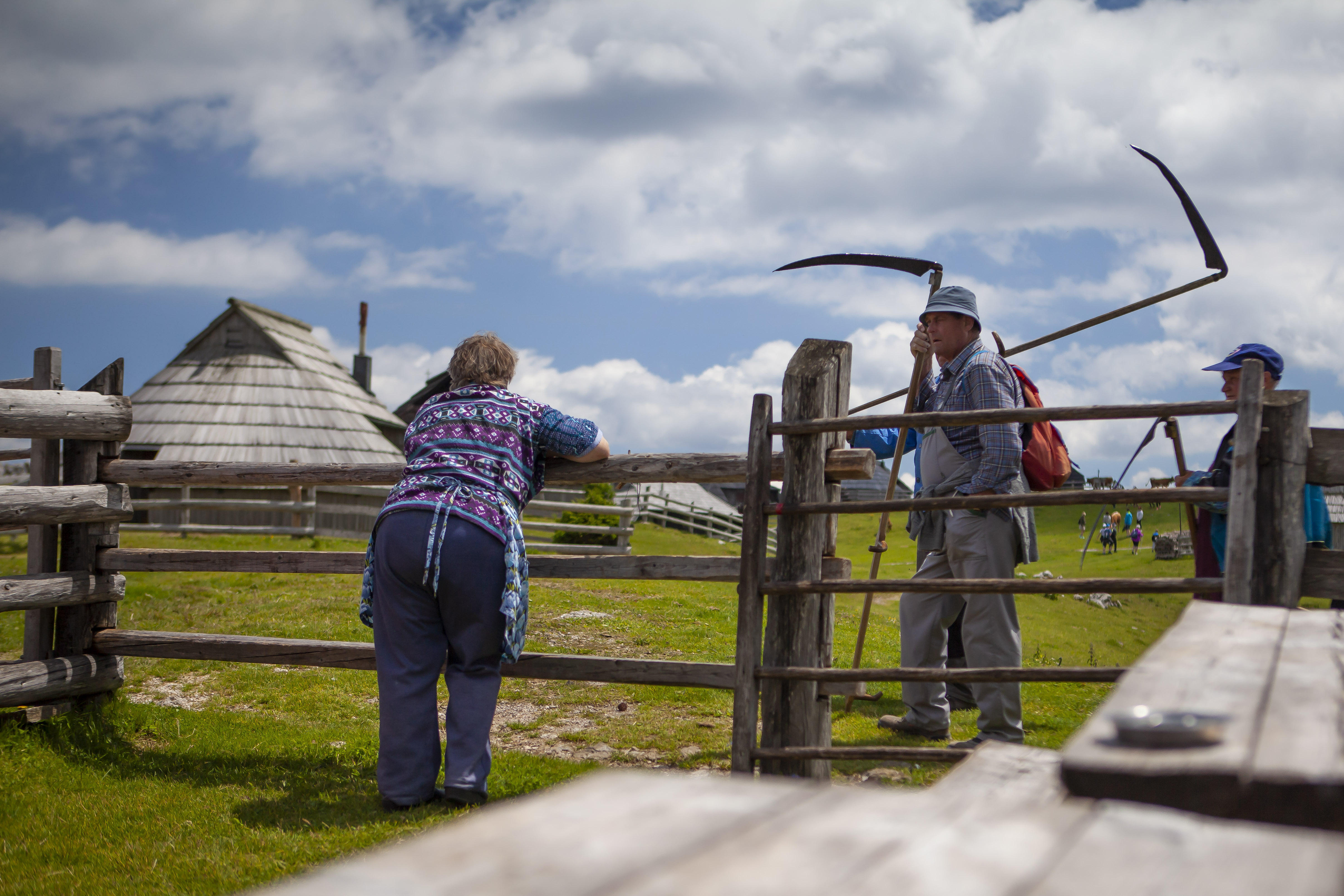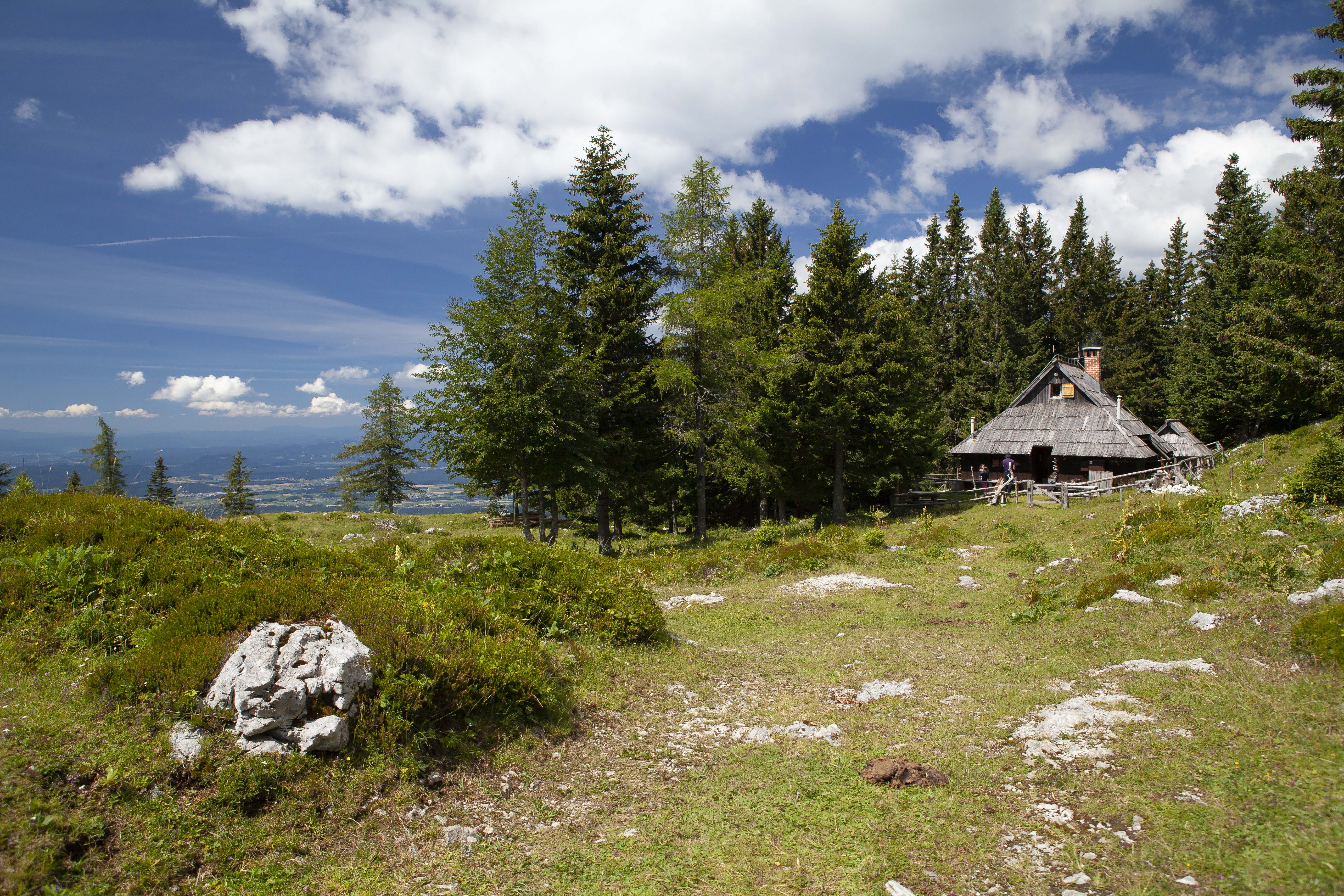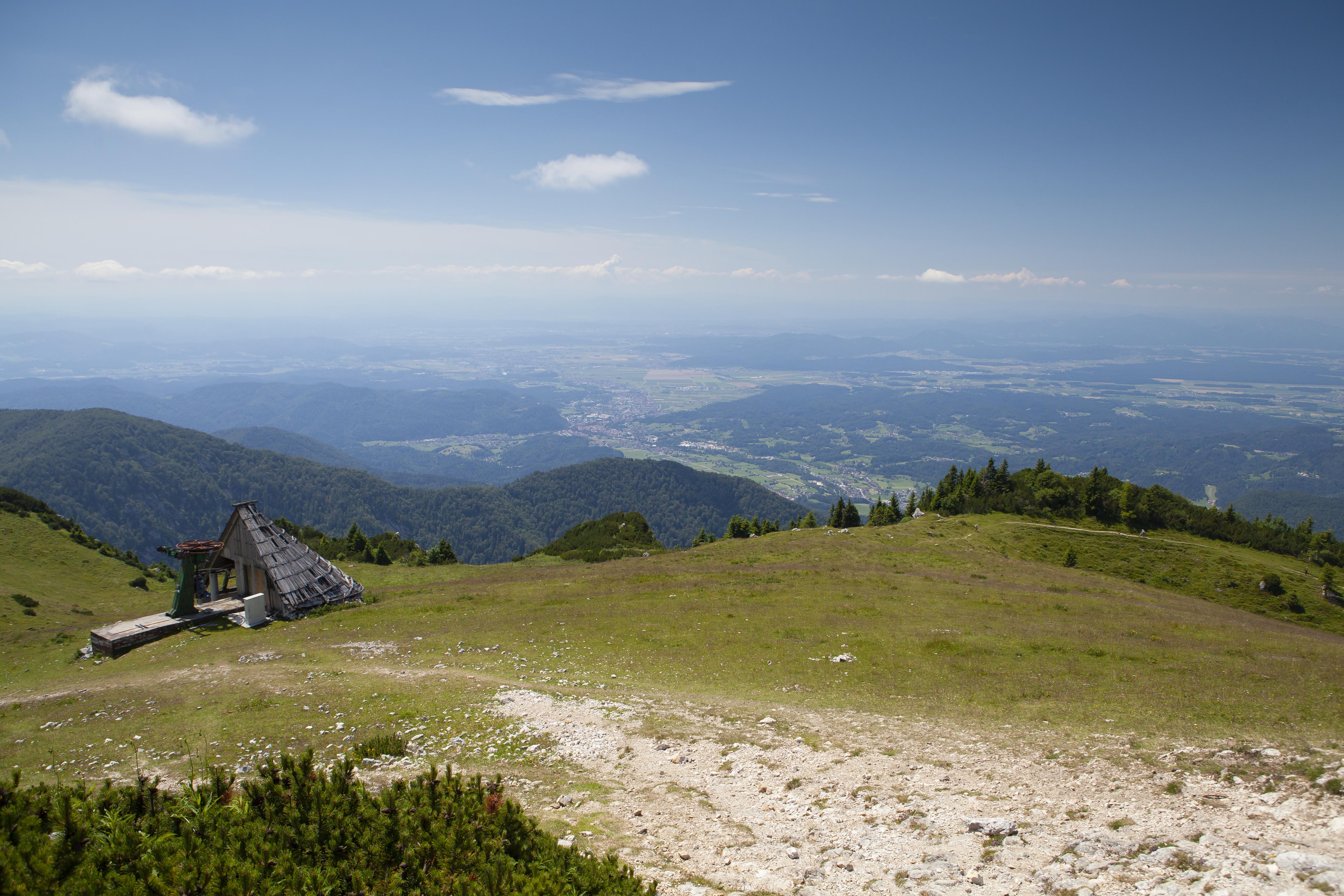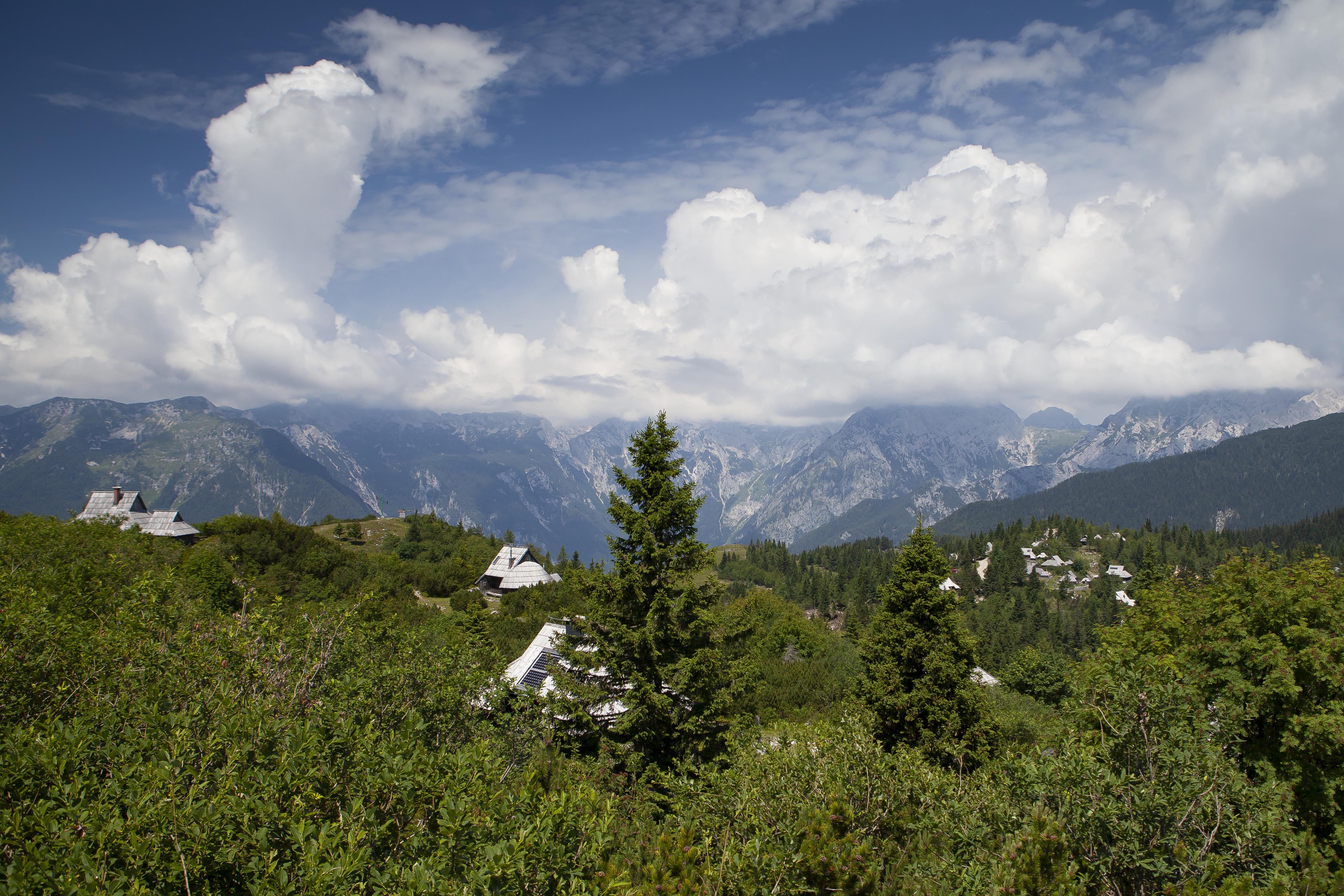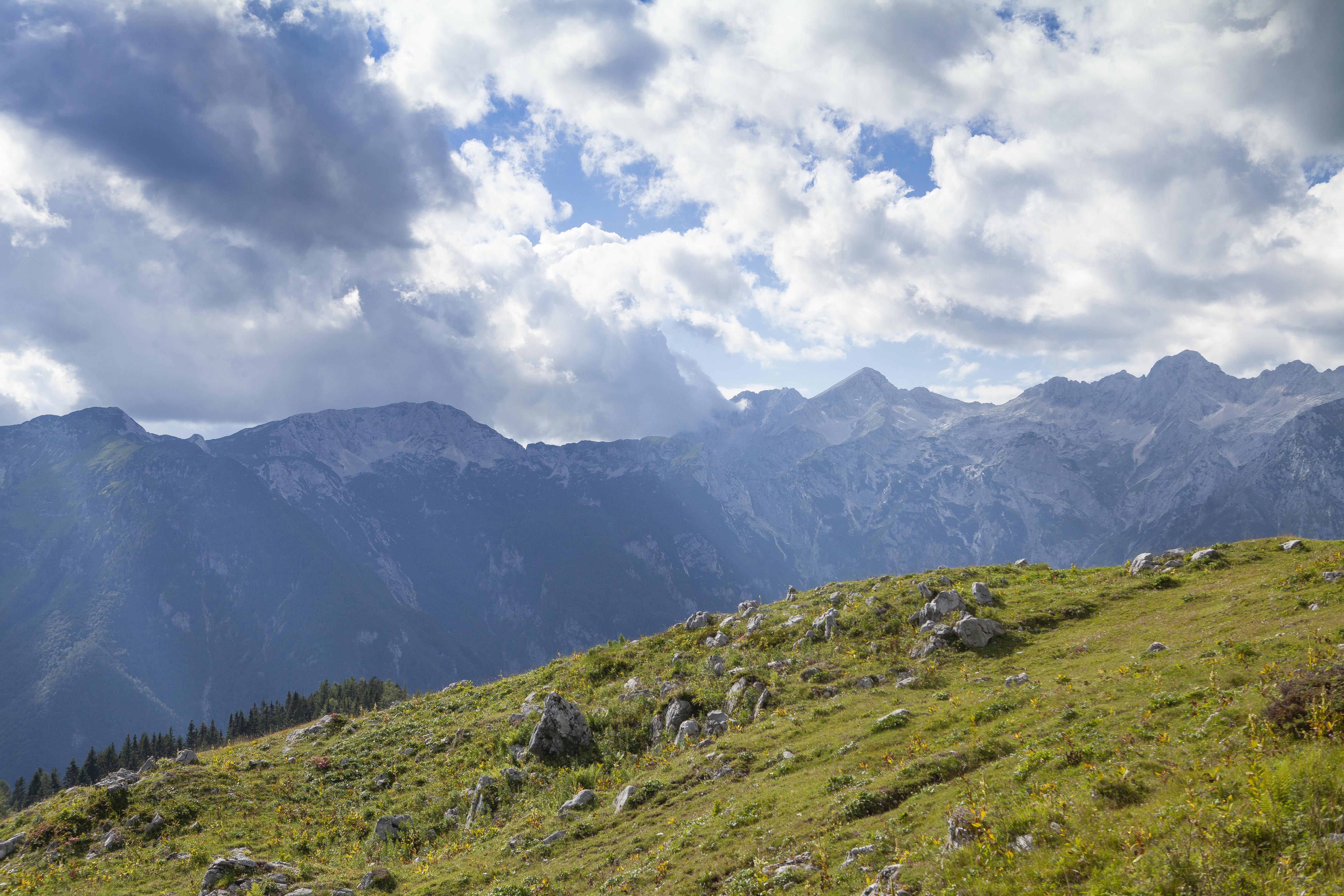Let’s get this straight. This mountain plateau in the Kamnik-Savinj Alps region of Slovenia is the cow’s territory. We humans are tolerated guests. Lady cows and their children are the only bovines permitted. Bulls, I’m told, would be too dangerous. But the way that copper-colored heifer is staring me down, giving me the stink eye, like a gunfighter in the wild west, I’m not so sure that a bull is the only concern.
During our stay here on Velika Planina our host, a 22-year-old cowherd named Zan who summers with an 82-year-old local named Fani, mentioned that cows can be, well, grumpy. While indulging in two hyper-local specialties prepared by Fani—kislo mleko, sour milk (which is way better than it sounds, a sort of tangy pudding), and zganci, a buckwheat crumble topped with cracklings—a helicopter landed on the plateau. Zan nonchalantly wondered aloud if it had been called in because someone had a hiking accident…or had been attacked by a cow.
I didn’t know that “attacked by a cow” was a thing. It sounds like the punchline of a joke. They are enormous creatures, their size unexpected until you stand next to one, but they have a docile, slow-minded look to them. Or so I thought. Not the cows on Velika Planina. They’ve got devil eyes that convey intelligence. “I know that you love bacon cheeseburgers,” they tell me. “Last week you ate my Aunt Gertrude. Vengeance shall be mine.”
This is what occurred to me when I woke the morning of our last day staying on the mountain, alongside my Slovenian wife and our 5 and 7-year-old daughters. We stayed at Koca Pinja, a totally charming, traditional alpine hut with the distinctive architecture that can be found only on Velika Planina: low-slung weathered wooden cottages that recall Norwegian stave churches, Icelandic dwellings, or something out of Middle Earth. They seem to be all roof, long, thin larch shingles sometimes blackened with a coat of edible oil, to last longer against the battering wind and sun. Out we stepped one perfect morning, into the front garden, which is enclosed by a rampart of logs. And there, eyeing us up, was a magnificent, silvery-spotted cow. She was cute, though colossal, and she would’ve come right up to our door had she not been fenced out by the enclosure. Then I turned slowly and saw dozens of them, lurking and slowly chewing the grass around us.
We were totally surrounded. If Alfred Hitchcock had summered in Slovenia then he would’ve made a film called The Cows instead of The Birds.
They raised their enormous heads to stare us down, determining if we were friend or foe, or possibly if we looked edible. They swooped like swaying battleships as they clomped past, zeppelin land sharks cruising their territory, the tundra-like undulations of this mountain plateau that has been the summer home of hundreds of cows, and around one-hundred cowherds, since ancient days. You don’t expect a heifer to inspire the fear of God in you, or the sublime sensation of the insignificance of a human in the face of nature’s might. But there we were. I had a brief vision that I should write a horror movie about carnivorous alpine cows and retire on the proceeds.
But then things got weird(er). This coven of lady cows began to do something that I certainly did not expect.
They began to mount each other.
There are places on this planet of ours that are entirely unique and magnificently beautiful. We’re not talking about pearl-white sandy beaches and turquoise oceans. Such locations may be beautiful and limited in number, but they are not one-of-a-kind. That postcard beach could be on Mauritius or Lesbos or the Bahamas or Hawaii. I’m talking about places that stand absolutely alone in their aesthetic and cultural history.
Velika Planina is one of them. Sure, there are spectacular vistas throughout the Alps. But this one comes armed with a quiver full of distinctions that make it unique. First off, it is remarkably flat, a true plain floating in the sky among jagged, snowcapped neighboring peaks. It is luxuriantly green through the summer months, but its limestone core is pitted and tunneled with sinkholes and caves. Moonlike grass-carpeted craters pock it. I could imagine rolling a coin along the inner slope of one of them, watching it spiral down in ever-narrowing coils until it disappears at the lowest point, at the crater’s center. The plateau is enormous and is scattered with those striking architectural masterpieces of simplicity, the herdsmen’s huts. While it’s wonderful for a day trip, there’s nothing quite like staying the night in these huts. I’ve been lucky enough to do so in several seasons, and a variety of weather patterns. I can recommend them all.
Waking at Koca Pinja to the extensive mooing at a disconcertingly short remove was the perfect way to feel a part of the mountain’s traditions. We spent a day accompanying Herdsman Zan, visiting the hut that functions as a museum, meeting Rezka, a nonagenarian who specializes in the boob-shaped trnic cheese that is a hyper-local culinary tradition, we ate Fani’s homemade delicacies (the lightest, fluffiest ajdovi zganci on the planet—they practically levitated onto my spoon), my daughters learned to milk a cow and we learned some legends of the mountain (like drawing three crosses in the dirt of your threshold would help protect cows from being bewitched by the bele deklice).
I’ve been to Velika Planina in all weather. I took a Swiss friend there in fog so thick that I could barely see a meter before me. I only heard the ominous sound of cow bells then, suddenly and with a whoosh reminiscent of Jaws, a gargantuan cow would emerge from the mist right next to us, before being swallowed by it once more. We spiraled for ages trying to find the church of Saint Mary of the Snows and when we did, we hesitated leaving it, like mariners grasping to a buoy in the vast sea.
My Australian friend and I stayed there last winter, with the crisp night so lightless that every star was like a puncture in a black shroud. We slept at the uber-lux Koca Ojstrica, crunched our way over the snow in utter darkness, dipped into the sauna, played Gozdar (a local children’s game), drank schnapps and felt at one with nature, as if we were posing for a Caspar David Friedrich Romantic painting about the awesomeness of Nature and the diminutive stature of Man. Velika Planina is amazing in all weathers and all seasons. I’ve been so inspired that I actually began to write a mystery novel, Alpine Noir-style, set there. (Hint: the cow won’t be the murderer, at least I don’t think so).
Between boob cheese and aggressive lesbian cows, who knew that Velika Planina was so sexually progressive? In this strange time of ours, when it is ill-advised to leave the country and when our friends should be avoided for fear of mutual infection, our own natural wonders are to be celebrated that much more. And in Velika Planina, Slovenia has a world-class treasure. More cowbell!




